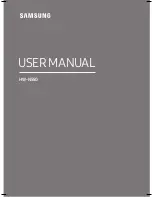
17
Storage and Winterizing with Antifreeze
The watermaker can be stored for up to one year in any climate using this procedure.
1.
Put 3 gallons of chlorine
-
free fresh water into a bucket. Perform a fresh water flush as de-
scribed in the normal operation section. Run the feed pump until the bucket is empty.
2.
Pour 2 gallons of low temperature
propylene glycol
(with no Ethyl Alcohol) potable water
system antifreeze into the bucket.
3. Make sure the pressure relief valve on
the Clark Pump is OPEN (unpressurized)
by turning it
1
/
2
turn counterclockwise.
4. Start and run the feed pump until anti-
freeze begins to come out of the brine dis-
charge hose.
5. Stop the feed pump. Direct the brine out
put into the bucket.
6. Start the Feed pump and circulate the re-
maining antifreeze for a few minutes until
well mixed.
7. Stop the feed pump and discard any anti-
freeze remaining in the bucket.
8. Blow out or drain the product tubing, as it will not contain antifreeze.
9. Leave the pressure relief valve open.
Clean Up
•
Remove the prefilter from its housing and replace with a clean dry filter element.
•
Rinse and dry the inside of the Aquifer case to prevent corrosion. Do not get the Feed pump
motor wet.
•
Remove and drain the service hoses and stow them away in the case. Insert the hose con-
nection plugs in the hose fittings.
•
Charge or remove the battery for storage.
Recommissioning
Propylene glycol can be difficult to flush from a membrane, especially after extended storage
periods. This results in high salinity water (high PPM) and residual flavor in the product water.
We recommend flushing the system WITH THE PRESSURE RELIEF VALVE OPEN for 4
-
6 hours
after storage with propylene glycol—the longer the better. If, after extended flushing, you still
experience low product water quality, cleaning with SC
-
2 usually removes all traces of propylene
glycol and returns the salinity to the level it was before storage with propylene glycol. See the
Cleaning Procedure
on page 20.
















































